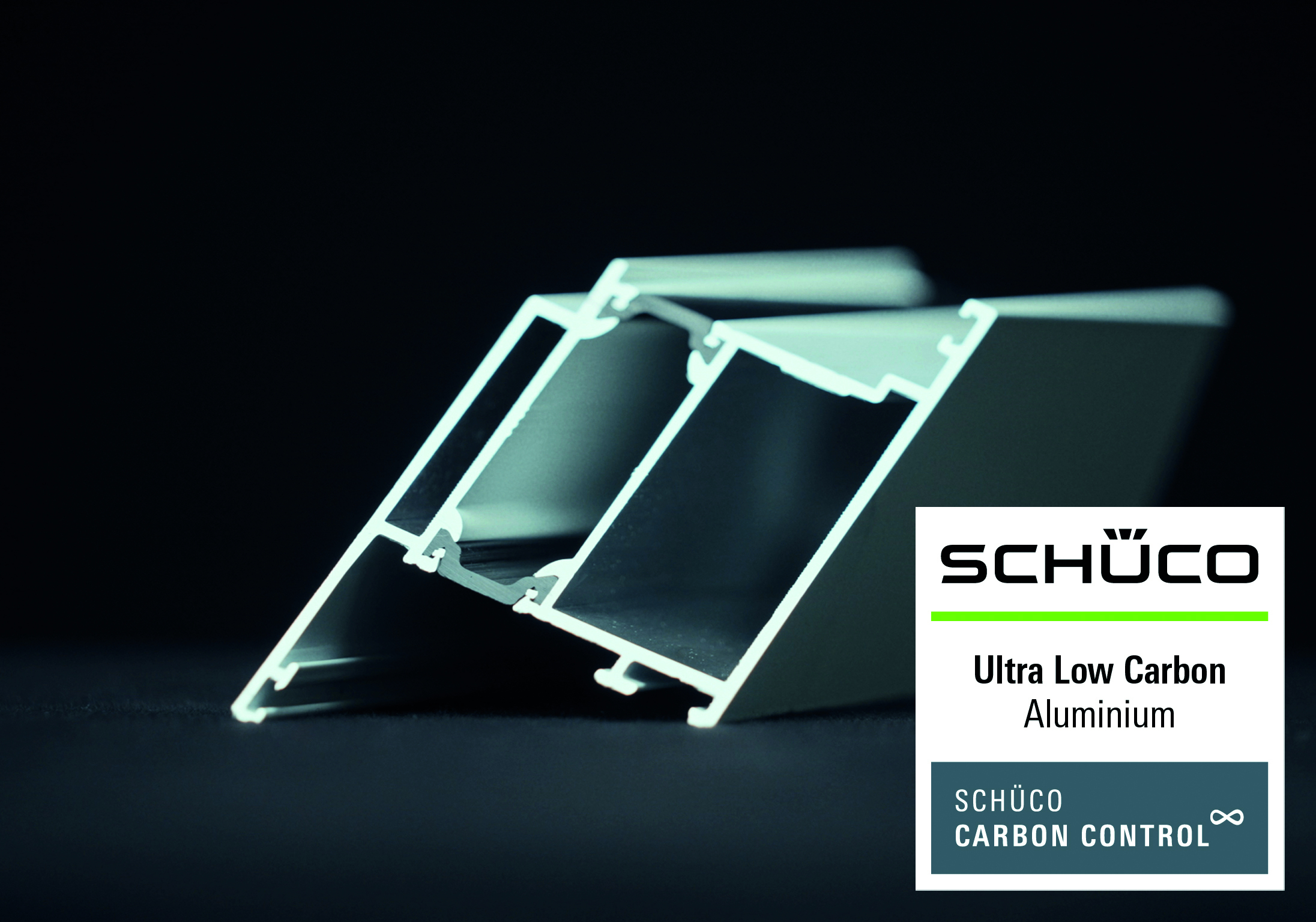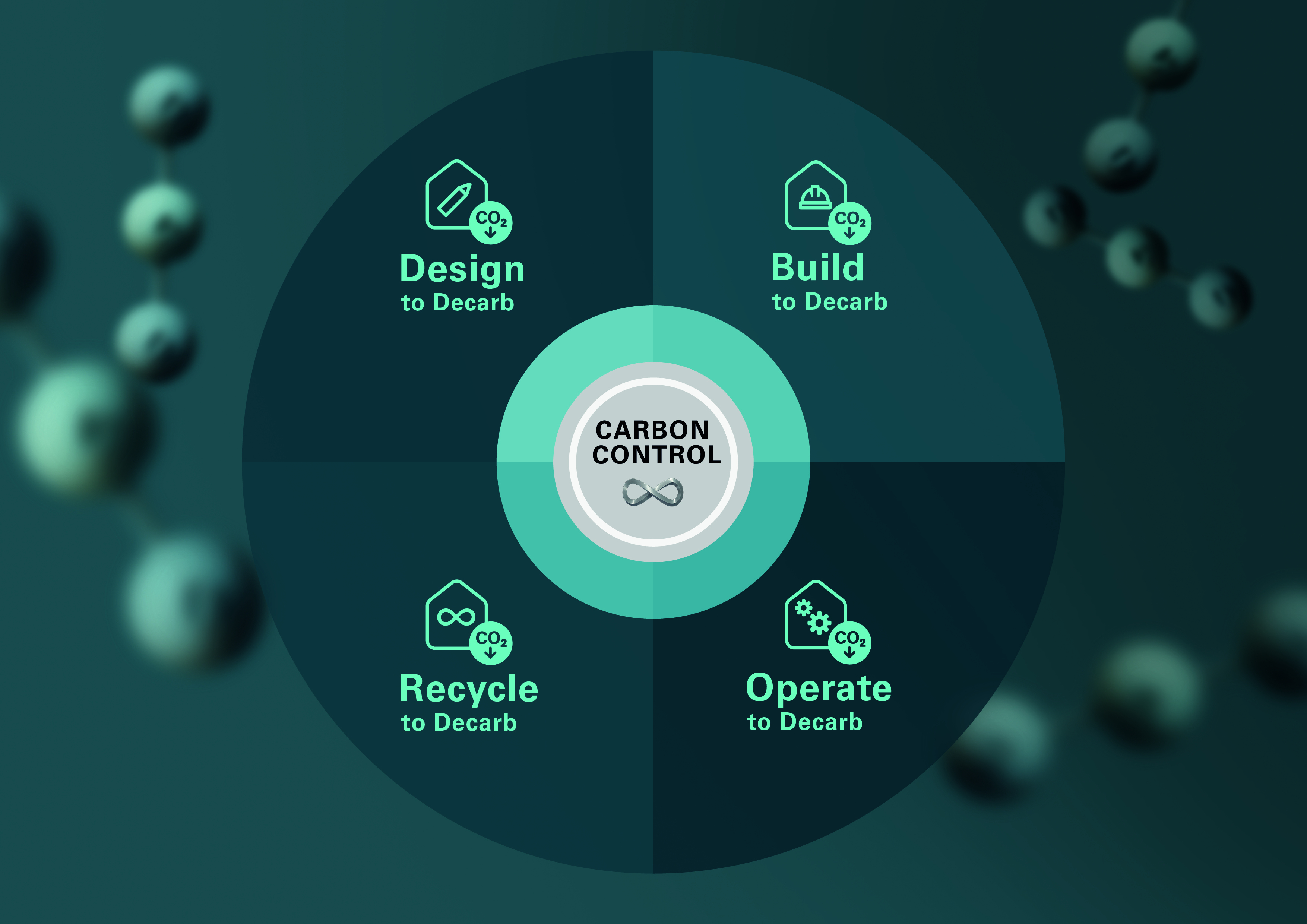Schüco launches Carbon Control for CO2 reduction in the construction industry

Schüco introduces Carbon Control, an innovative and holistic approach to drastically reduce CO2 emissions in the building sector. It offers a response to the ambitious goals of the European Green Deal, which aims to reduce greenhouse gases by 55% by 2030 and climate neutrality by 2050.
Toolbox for managing climate-friendly facades
Schüco's Carbon Control comprises a comprehensive range of Schüco products and services that can be used at every stage of the construction process and throughout a building's lifetime. The goal is to decarbonise buildings by optimising the CO2 emissions linked to windows, doors and facades in a project-specific way
Expert support, for architects, investors and aluminium fabricators
In the future, a building's value will increasingly hinge on its carbon emissions over its lifetime. The Global Warming Potential (GWP), which measures a building's impact on global warming, will be essential for preserving its long-term value. This impact is quantified as a CO2e (CO2 equivalent) value.
Controlling this process and complying with regulations and certifications is becoming increasingly complex. Legal requirements and new European rules make it more challenging for planning and architectural firms to build in compliance. In turn, aluminium fabricators are finding it difficult to meet sustainable best practice requirements while keeping their business not only competitive but also future-proof.
Schüco's Carbon Control offers the solution by helping investors, architects, builders, managers and users to manage and reduce carbon emissions. This support extends from the initial design phase through construction, usage, and ultimately to the building's recycling phase. Consequently, buildings remain future-proof investments that consistently comply with legal requirements.

"It's crucial for us to be involved from the earliest stage possible, as that's when we can have the most significant impact on reducing carbon emissions,"
Control for every stage of construction
Carbon Control focuses on four crucial phases in the lifecycle of a building:
- Planning (Design to decarb): Schüco provides support during the design phase to optimise the CO2 balance of a building, considering, for example, the shape of the building, materials, surface finishes and smart building technologies.
- Construction (Build to decarb): during the construction phase, Schüco's proprietary software SchüCal makes it possible, among other things, to monitor and manage the carbon footprint of façade elements, with a focus on sustainable materials such as Low Carbon (LC) and Ultra Low Carbon (ULC) aluminium. It calculates the environmental impact of these materials. The CO₂e input into the building is easily determined and shared with designers, building certifiers and investors in the form of an EPD.
- Use (Operate to decarb): Schüco optimises the operational phase with intelligent building management systems, thermally insulated facades and solar solutions. This results in more sustainable building management. Thanks to IoF ID (Internet of Façades), a digital tag on windows, doors, or other façade elements that gathers information about the product, planning and executing maintenance and product upgrades becomes more efficient. Additionally, it incorporates details regarding the appropriate actions during its decommissioning phase.
- Decommissioning (Recycle to decarb): the focus is on recycling and especially reusing materials at the end of the building's life, in line with the principles of Cradle to Cradle, to contribute to a circular economy.

In addition to the products and services offered by Schüco, it also includes project-specific advice and support from a team of Carbon Consultants. They help architects, developers and constructors actively minimise the façade's carbon footprint. By doing so, Schüco ensures the long-term competitiveness of its partners.
For more information about Schüco and Carbon Control, visit Minimising CO2 in the building envelope | Schüco Carbon Control (schueco.com)
Latest insights & stories

A Global Movement: The World Unites in a Pink Pledge for Clean and Sustainable Water
5,000 participants. 32 countries. €30,000 funds raised. And that's just the beginning.
Picture this: One step that sends ripples across the globe, transforming lives and creating waves of change. You might wonder, how can such a simple action for most of us have such a profound impact?

Sustainability and circularity in construction
Join us in transforming the future of construction, creating buildings that not only stand the test of time but also contribute to a healthier planet!

RainTunes: Shower scenarios for the soul
Light, hearing, smell, and touch: Together with experts, we have developed sensuous scenarios that turn showering into an individual experience. Whether you want to prepare for the day ahead or relax after working out. Whether you want to refresh after a day’s work or unwind at the end of the evening: RainTunes surprises with multisensory experiences.*
*Currently available only in Germany and Austria.